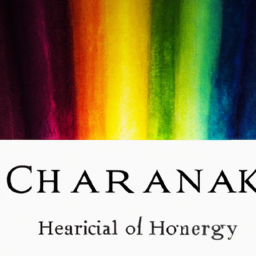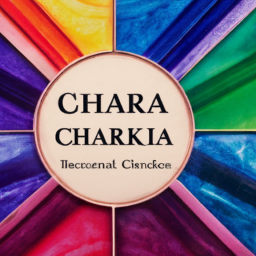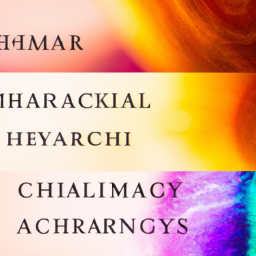The concept of chakras has gained immense popularity in recent times, especially in the realm of spirituality and alternative healing. But where do these energy centers, considered to be the main source of our life force, actually originate from? Let’s delve deeper and explore the roots of chakras.
What are chakras?
Chakras, derived from the Sanskrit word “cakra” which means wheel or circle, are believed to be spinning energy centers located throughout our body. According to ancient Indian and Chinese medicine, there are seven main chakras aligned along the spine, each corresponding to specific physical, emotional, and spiritual functions.
These chakras are said to be responsible for the flow of energy, or prana, throughout our body, ensuring physical, mental, and emotional well-being. When these energy centers are blocked, it can lead to various physical and emotional disturbances and illnesses.
The origins of chakras
The earliest mention of chakras can be traced back to the ancient Hindu scriptures, specifically the Vedas and the Upanishads. These texts describe chakras as vortexes of energy where the physical and spiritual aspects of our being intertwine. It is believed that these energy centers were first discovered and explored by yogis and sages during deep meditation.
In traditional Chinese medicine, the concept of chakras is also present in the form of meridians, which are channels through which the life force flows. These meridians are connected to various organs and functions of the body, and any blockages in them can disrupt the flow of energy and lead to illness.
The symbolism of chakras
The chakras are also represented by specific symbols and colors, which hold deep spiritual significance. The seven chakras are often depicted as lotus flowers, with each petal representing a different aspect of the human experience.
The first chakra, located at the base of the spine, is represented by a red lotus with four petals and is associated with grounding and survival. Moving upwards, the second chakra, represented by an orange lotus with six petals, is associated with creativity and sexuality. The third chakra, located at the solar plexus, is a yellow lotus with ten petals and is linked to personal power and self-esteem.
The fourth chakra, also known as the heart chakra, is a green lotus with twelve petals and is connected to love, compassion, and connection. The fifth chakra, represented by a blue lotus with sixteen petals, is located at the throat and is linked to communication and self-expression. The sixth chakra, located between the eyebrows, is a violet lotus with two petals and is associated with intuition and spiritual awareness.
Finally, the seventh chakra, also known as the crown chakra, is represented by a thousand-petal lotus and is located at the top of the head. It is linked to spiritual connection and enlightenment.
The role of chakras in our daily lives
While the origins of chakras may stem from ancient texts and practices, their relevance in our modern lives cannot be ignored. In the chaos of our fast-paced lifestyle, the balance of our chakras can easily be disrupted, leading to physical and emotional imbalances.
Therefore, it is essential to pay attention to our chakras and ensure their proper functioning through various practices such as yoga, meditation, and energy healing. By nurturing and aligning our chakras, we can achieve a state of balance and harmony, leading to a healthier and more fulfilling life.
In conclusion
The origins of chakras can be traced back to ancient Hindu and Chinese texts, where they were discovered and explored by yogis and sages. These energy centers have been symbolized and depicted in various forms and hold deep spiritual significance. With the growing interest in spirituality and alternative healing, understanding and aligning our chakras has become more crucial than ever. By doing so, we can tap into the source of our life force and achieve a state of overall well-being.
Chakra healing is an ancient and powerful system of energy stored within the body. It is believed to be the unlocking of the body’s natural ability to heal.
Chakras originate from the ancient Sanskrit word “cakra”, meaning “wheel” or “circle”. Chakras are thought to be part of the subtle body, not the physical body, and is the believed reason that chakra healing has been identified as a spiritual practice.
The idea of chakras have been around for thousands of years, with theories of these circular energy vortexes originating from Hindu teachings. It is said that in each of the seven chakras can be found 72,000 nadis or invisible energy channels within the body. These channels are believed to influence the organs and bodily systems that they are attached to.
When these channels are blocked, the flow of energy through the body is disrupted, causing emotional and physical imbalances which can lead to negative physical and mental symptoms. Through the practice of chakra healing, imbalances of the subtle body can be identified and shifted to bring balance and harmony back into the energy system.
Using a variety of techniques, such as meditation, yoga or Reiki, practitioners of chakra healing can identify and unblock the energy channels within the chakras. These techniques are used to create a balance of energy within each of the seven chakras in order to restore physical, emotional and spiritual health.
Chakras can be divided into seven categories, each influencing and corresponding to a different area of the body. It is believed that chakras are opened and closed depending on the flow of energy through them and can be used for health and spiritual healing of the body, mind, and spirit.
There is much debate amongst experts about the origin of the chakra system, but the fundamental belief is that this ancient system of healing is here to help us live a more balanced and harmonious life.





Interesting topic!
SuperlyTwinkle: Thinking of looking into this?
Wow! Learning about the origins of chakras is an essential part of understanding and maximizing their potential energy flow. #LetTheJourneyBegin